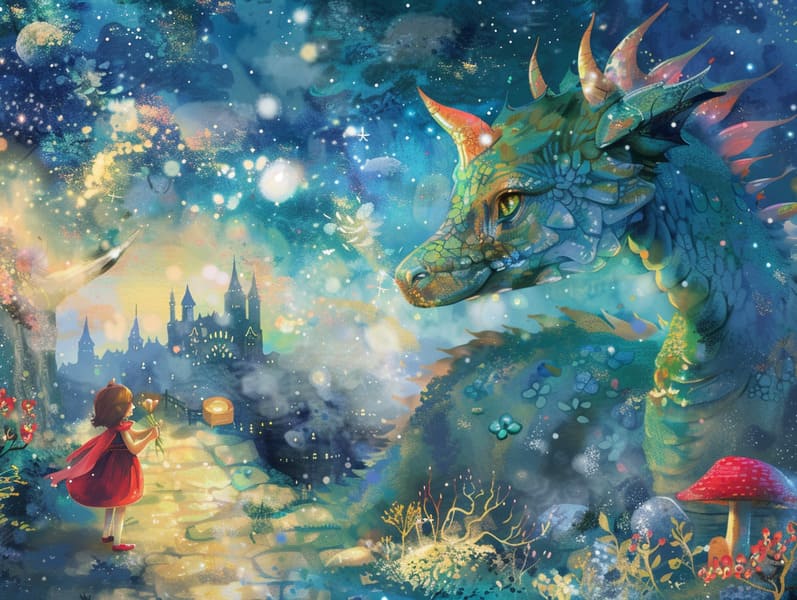Tracing the Heritage of Popular Fairy Tales with Their Unending Attraction.
Tracing the Heritage of Popular Fairy Tales with Their Unending Attraction.
Blog Article

Traditional fairy tales have historical significance. These narratives have been conveyed from one generation to the next centuries before they were ever transcribed. They arose from a variety of civilizations, including Indigenous traditions. They were initially disseminated among elders, often carrying themes and messages aligned with the societal norms and beliefs of the time.
Jacob and Wilhelm Grimm, Jacob and Wilhelm Grimm, were among the first to collect many of these beloved tales. Their anthology, "Grimm's Fairy Tales," included classics like "Ashenputtel," "The Bread Crumb Trail," and "Snow White," which have since become cornerstones in the world of iconic fairy tales. Similarly, the Danish author's fantastical tales, such as "The Mermaid's Tale," and "The Duckling that Could," have won hearts worldwide, ensuring their place in the pantheon of beloved fairy tales.
Though they are old, traditional fairy tales remain as pertinent as ever, especially as bedtime stories for kids. These magical stories are now available in many formats, including vividly illustrated books, captivating animations, and digital storybooks.
Their continued relevance can be attributed to several charming aspects:
Moral Lessons: Ancient fairy tales often convey important moral lessons. Stories like "The Wolf and the Liar" teach the merit of integrity, while "The Tortoise and the Hare" demonstrate the merits of resolve and humility. These stories offer young ones clear distinctions between right and wrong, developing their moral compass in a gentle yet profound way.
Compassion and Insight: Traditional fairy tales frequently include personalities facing challenges and struggles, motivating kids to understand with their struggles and celebrate their triumphs. For instance, "Beauty and the Beast" points out the benefit of seeing beyond the surface to know the inner core of a individual, strengthening compassion and appreciation.
Cultural Appreciation: Many classic fairy tales are rich in the cultural contexts from which they developed. Discovering these stories can provide fascinating glimpses into different beliefs, promoting a sense of world awareness and respect.
Creativity and Fantasy: The fanciful elements in ancient fairy tales—mythical creatures—generate children’s creative dreams. These narratives lead readers to fantastical realms, enlivening fantasy-filled thoughts and a sense of astonishment that lasts a lifetime.
Ancient fairy tales are not only enchanting but also informative. They act as mesmerizing tools in building various thinking and feeling skills in young ones. When old fairy tales are spoken, they develop language proficiency by offering new words and complicated sentence structures. This practice also improves listening skills and mental focus, as kids hang on every word, enthusiastic to see what happens next.
Furthermore, reflecting on the themes and characters of fairy tales can cultivate analytical skills and evaluative skills. Young ones are shown to detect patterns, guess what will happen, and comprehend cause and effect. These examinations also aid kids speak out their thoughts and feelings, adding to their emotional intelligence.
In today’s cyber age, the presence of online storybooks has made these fairy tales more accessible than ever. Web-based platforms and mobile apps provide vast collections of traditional fairy tales that can be enjoyed or played anytime, anywhere. Fairy tales recited are particularly well-received, featuring an engaging way for kids to be a part of these delightful tales. Sound books and voiced videos move characters and settings to life, often complemented by mesmerizing sound effects and soundtracks that augment the tale experience.
The timeless charm of traditional fairy tales lies in their ability to fairy tales for kids shift to modern days while staying true to their basic principles. Contemporary reimaginings of these stories often spotlight more representative protagonists and modern settings, making them relatable to today’s audience. However, the basic principles of spirit, kindheartedness, and even-handedness remain unchanged, continuing to move audiences of all ages.
Old fairy tales also offer a sense of peace and predictability. They extend a well-ordered narrative with a straightforward beginning, middle, and end, often drawing to a close with the wrap-up of conflicts and the triumph of honesty over deceit. This uniformity can be placating for young readers, distributing a sense of firmness in an always shifting world.
Classic fairy tales continue to delight and teach new generations, maintaining their loveliness and applicability in modern society. As bedtime stories for kids, they deliver up a perfect blend of fascination and comprehension, enriching moral values, empathy, and creativity. The availability of online fairy tales and the well-liked nature of fairy tales recited ensure that these classic tales remain acquirable to new generations.
By safeguarding and releasing these tales, we continue to extol the rich tapestry of tradition and cultural heritage. Whether you are discovering a artistically illustrated book, discovering a web-based collection, or playing an sound book, the loveliness of traditional fairy tales is always within reach. These stories reveal of the lasting nature of tales and its ability to unify us across epochs and places.
If you are browsing a richly illustrated book, browsing a online library, or listening via an narrated book, the radiance of children's fairy tales is always within reach.
These stories convey of the timeless nature of tales and its ability to gather us across eras and regions, forming a connection that captivates and teaches alike.